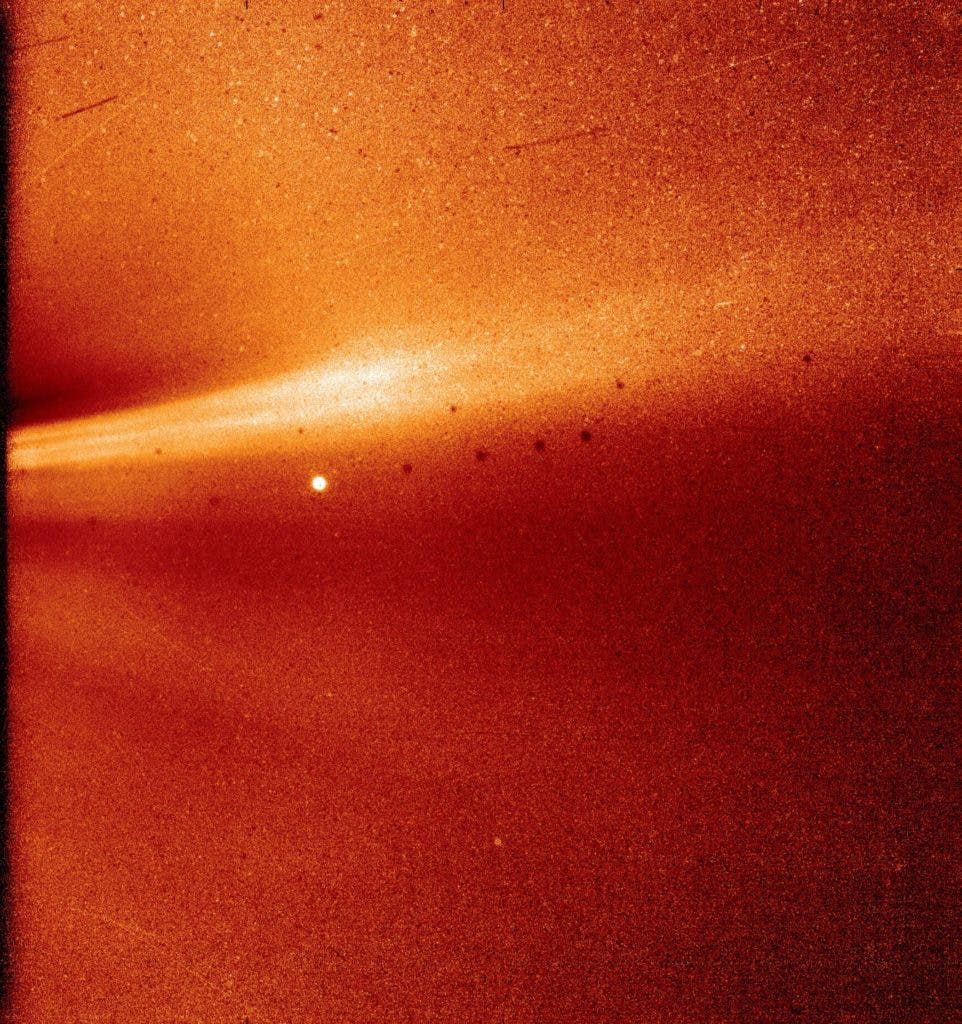NASA scientists treated the audience at this week’s American Geophysical Union meeting to a special treat: an unprecedented photo taken from inside the sun’s atmosphere. The image was captured by the Parker Solar Probe, which recently broke the record for the closest man-made contraption to orbit the sun, but also for the fastest spacecraft ever.
When it took this breathtaking photo, Parker was a mere 27.1 million km (16.9 million miles) from the sun, effectively traveling through its corona — the outermost part of the Sun’s atmosphere. The temperature in the corona is more than a million degrees, surprisingly much hotter than the temperature at the Sun’s surface which is around 5,500° C (9,940° F or 5,780 kelvins). It’s quite formidable that something we’ve made is capable of withstanding such elements — let alone able to beam back valuable data or images such as this.
Normally, we cannot see the corona directly because the sun’s surface is far too bright, overpowering the fainter corona. It’s possible sometimes to see a wispy corona with the naked eye during a solar eclipse, when the moon blocks the solar surface. Otherwise, scientists use a special instrument called a coronagraph, which is equipped on some ground-based telescopes and satellites.

Two views of the Sun’s corona: during an eclipse (top) and in ultraviolet light (bottom). Credit: NCAR’s High Altitude Observatory and NASA SDO.
This particular image was radioed back to Earth on December 7, however, it was taken much earlier, in November. The complete dataset won’t be sent until Parker undergoes a second flyby in April 2019.
The two distinct jets seen emanating from the left of the image are known as coronal ejections, which are streams of plasma that often follow solar flares. The bright spot in the distance is Jupiter, the gas giant. What about those black spots? Those are far less interesting because there’s nothing there in reality — just artifacts of background correction.
Parker also broke the record for the fastest spacecraft ever, beating the previous record set by Helios 2 in 1976 at 246,960 kilometers per hour (153,454 miles per hour) relative to the sun. But during its final pass around the sun, Parker is expected to reach a staggering top speed of 692,017 km/h (430,000 mph). This will actually be important since Parker will be able to match the rotational speed of the sun, enabling the probe to hover over the same region of the sun for a brief period of time — just like a geosynchronous satellite.
For its mission, Parker carries a range of instruments that can study the sun both remotely and in situ (directly) — the kind of observations that might unravel some of the sun’s most well-kept secrets. One of them has to do with the mystery of the acceleration of solar wind — the constant ejection of magnetized material from the sun. Somewhere, somehow, this solar wind is accelerated to supersonic speeds, and scientists don’t know why yet.
Perhaps the most mind-boggling thing about the sun is that its atmosphere is thousands of times hotter than its surface, which makes no sense. But perhaps Parker can come up with an answer.
During its closest flyby, slated for June 2025, Parker will be only 6.1 million kilometers (3.8 million miles) from the sun’s surface, where temperatures can reach millions of degrees Celsius. Meanwhile, Parker will complete 24 orbits, looping between Venus and the Sun.










